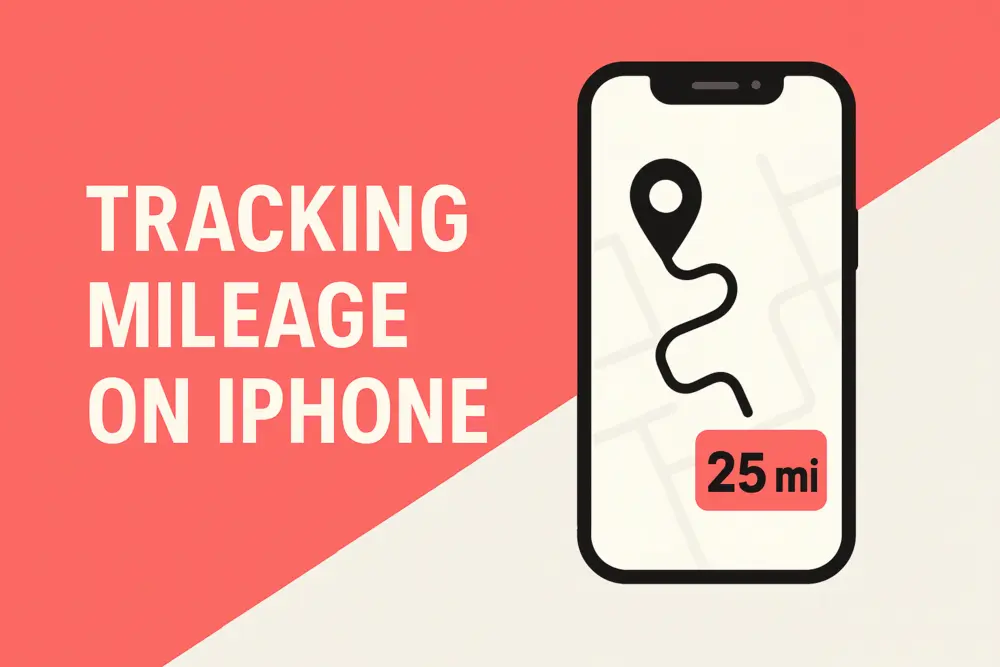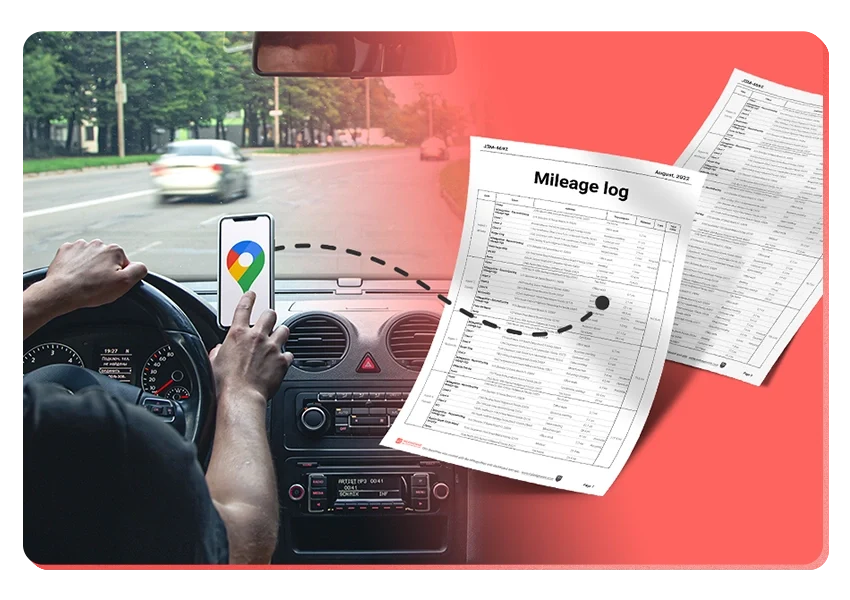Table of Contents
Paying for gas to get to the doctor, dentist, or other medical appointments can add up fast. The good news is that the IRS lets you deduct these miles! This is called medical mileage, and it can save you money on your taxes if you know how it works.
What is Medical Mileage and How Can You Deduct It?
Medical mileage is simply the number of miles you drive for medical reasons. Think of it as getting a tax break for your trips to stay healthy. The IRS allows you to deduct the cost of using your car for necessary medical care. You need to itemize your self-employed tax deductions on your tax return to claim this. Itemizing means listing out specific expenses rather than taking the standard deduction. This deduction helps ease the financial load if you or your family has frequent trips for health reasons. It’s a rule designed to help people manage the costs of getting the medical care they need, from routine check-ups to major treatments.
Now, let’s talk about how you can claim medical mileage on your taxes. The IRS gives you a couple of options. You can either keep track of your actual car expenses for these trips (like gas, oil, repairs directly related to the travel) or you can use the Standard Medical Mileage Rate. Most people find using the standard rate much easier because it’s a simple calculation. You just multiply the number of eligible miles you drove by the rate the IRS sets for that year. This rate changes each year, so it’s important to use the correct one. The government updates this rate to reflect changes in the cost of car ownership and driving. Choosing the standard rate means you don’t need to track every single gas receipt or repair bill for those specific trips.
The goal here is to make sure you’re not left paying entirely out-of-pocket for the transportation you need to get vital medical services. Whether it’s visits for yourself, your spouse, or your dependents, those miles can potentially add up to a nice deduction on your taxes. Claiming medical mileage is perfectly legal and encouraged if you qualify. It’s part of the system designed to help offset some healthcare costs. Just remember, you need to choose between the standard rate and actual expenses; you can’t do both for the same trip.
You may also claim your medical mileage deduction for past years, using the historical IRS Mileage Rates.
FAQ
What is medical mileage?
Medical mileage refers to the miles you drive for qualified medical purposes, such as trips to doctors’ appointments, therapy sessions, or obtaining medical supplies, that may be deductible on your tax return.
Who can claim medical mileage deductions?
You can claim medical mileage if you itemize deductions and your total medical expenses exceed the IRS threshold (7.5% of your adjusted gross income for most taxpayers).
How does MileageWise help track medical mileage?
MileageWise lets you categorize trips as “medical,” automatically logs dates, distances, and purposes, and generates reports to support your deductible medical mileage claims.
Try MileageWise for free for 14 days. No credit card required!
Related Terms

Introducing the Google Timeline to Mileage Log Mobile App
We’re excited to share our latest development! You can now convert your Google Maps Timeline drives directly into an IRS-compliant mileage log right on your

DoorDash Tips and Tricks: Your Edge Over Competition
Last Updated: November 17, 2025 I’m excited to share the top DoorDash tips and tricks shared by YouTuber Pedro “Mr.BetonYou” Santiago. He collected and vetted the

8 Uber and Lyft Scams Every Driver Should Know
Last Updated: November 9, 2025 Driving for Uber or Lyft can be a rewarding gig, offering flexibility and the chance to meet new people. However,
SherpaShare Shutdown – What To Do Now?
Last Updated: October 7, 2025 SherpaShare was a service designed primarily for people who work as independent contractors, particularly those in the ride-sharing and delivery
Gas Mileage Tracker: Your Key to Savings
Last Updated: August 8, 2025 A gas mileage tracker helps drivers watch their vehicle’s fuel use, mileage, and related costs. You might want one to

How To Track Miles on iPhone: Find your Match
Last Updated: August 6, 2025 Looking to track miles on your iPhone? Whether it’s for fitness, personal use, or business tax deductions, your iPhone offers
Related Guides



It’s Finally Here! Google Maps Timeline Import from Mobiles
Transform your Trip Lists into Mileage Logs with MileageWise

Introducing the Google Timeline to Mileage Log Mobile App
We’re excited to share our latest development! You can now convert your Google Maps Timeline drives directly into an IRS-compliant mileage log right on your

DoorDash Tips and Tricks: Your Edge Over Competition
Last Updated: November 17, 2025 I’m excited to share the top DoorDash tips and tricks shared by YouTuber Pedro “Mr.BetonYou” Santiago. He collected and vetted the

8 Uber and Lyft Scams Every Driver Should Know
Last Updated: November 9, 2025 Driving for Uber or Lyft can be a rewarding gig, offering flexibility and the chance to meet new people. However,
SherpaShare Shutdown – What To Do Now?
Last Updated: October 7, 2025 SherpaShare was a service designed primarily for people who work as independent contractors, particularly those in the ride-sharing and delivery
Gas Mileage Tracker: Your Key to Savings
Last Updated: August 8, 2025 A gas mileage tracker helps drivers watch their vehicle’s fuel use, mileage, and related costs. You might want one to

How To Track Miles on iPhone: Find your Match
Last Updated: August 6, 2025 Looking to track miles on your iPhone? Whether it’s for fitness, personal use, or business tax deductions, your iPhone offers

Introducing the Google Timeline to Mileage Log Mobile App
We’re excited to share our latest development! You can now convert your Google Maps Timeline drives directly into an IRS-compliant mileage log right on your

Was Your Google Timeline Deleted? Here’s What Happened:
Last updated: November 20, 2025 If you recently opened Google Maps and noticed your Timeline was deleted or partially missing, you’re not alone. In this

It’s Finally Here! Google Maps Timeline Import from Mobiles
Struggling to Manage Your Trips After Google’s Timeline Update? If you’re reading this, you’ve likely encountered the recent update affecting Google Maps Timeline. With Timeline
Transform your Trip Lists into Mileage Logs with MileageWise
Last Updated: October 1, 2025 Do you have a list of monthly trips from a data source like Excel or Google Timeline, but need to

How to Download Google Timeline Data: A Guide
Google Timeline Import Hub Last Updated: October 30, 2025 Want to download Google Timeline data? This guide shows you how to extract your location history

How to Export Google Maps Timeline: Get Your Data
Google Timeline Import Hub Last Updated: October 29, 2025 It can be tricky to export Google Maps Timeline data after Google’s recent updates. Many users
Google Maps Mileage Tracker: From Timeline to Mileage Log
Google Timeline Import Hub Last Updated: October 29, 2025 If you’re an active user of Google Maps Timeline you likely already know how convenient it
Timeero
Table of Contents Timeero Timeero is a time, location, and mileage tracking app designed for businesses and teams in the United States. It helps employers
Milewise by Allstate
Table of Contents Milewise by Allstate Milewise by Allstate is a pay-per-mile car insurance program offered by Allstate Insurance in the United States. It’s designed
Hurldr
Table of Contents Hurdlr Hurdlr is a finance and expense tracking app designed for self-employed professionals, freelancers, and gig workers in the United States. It








